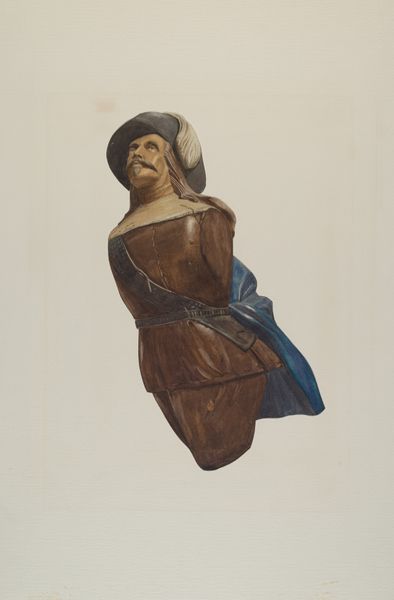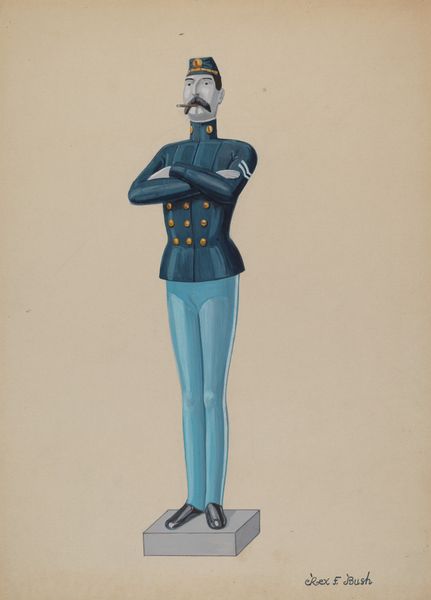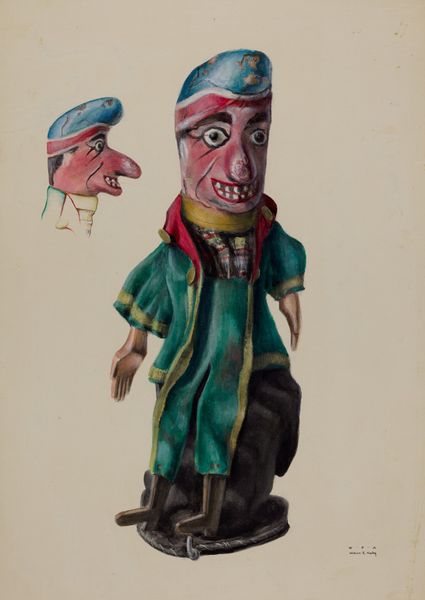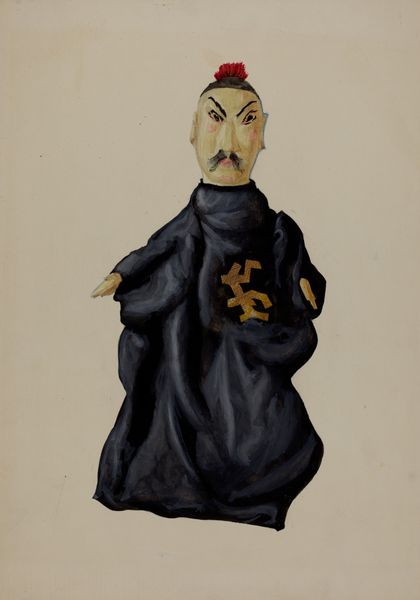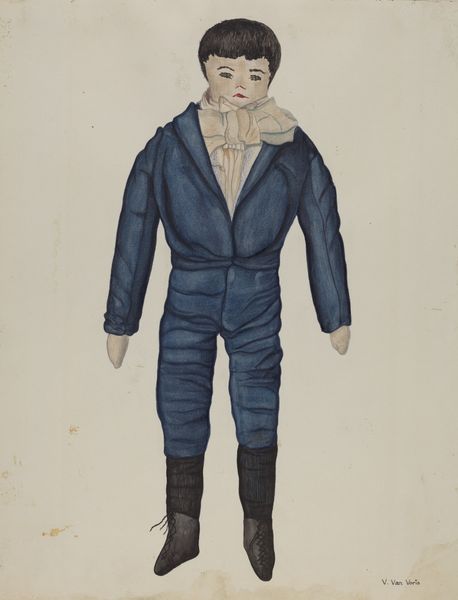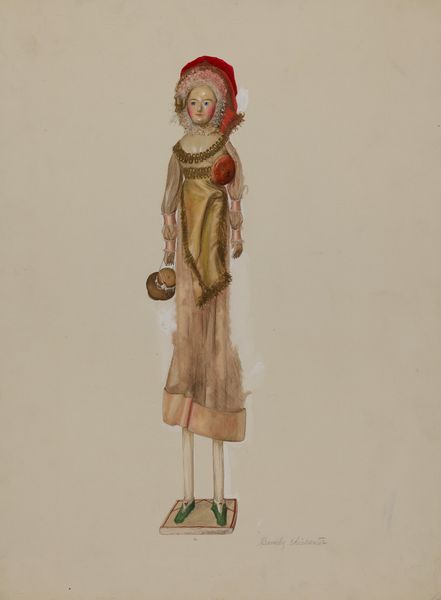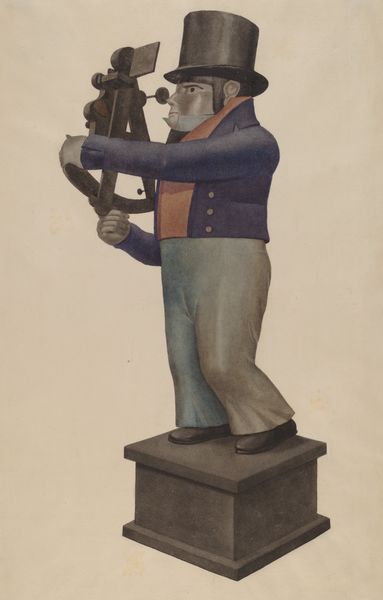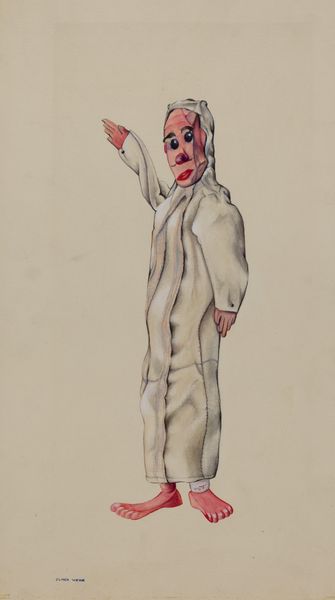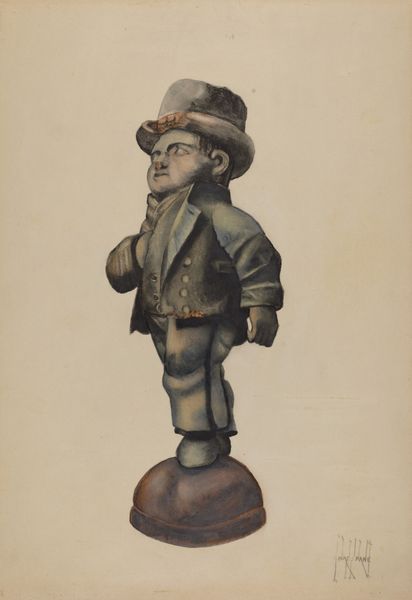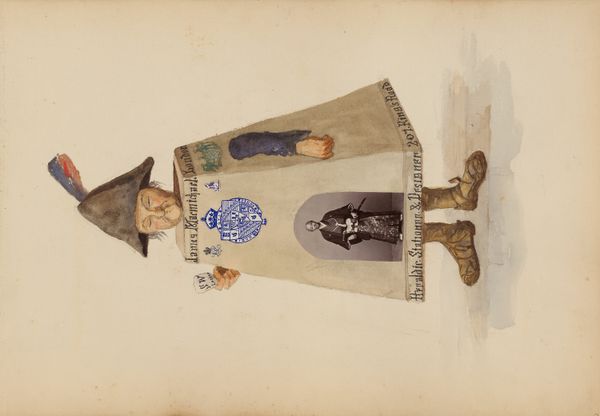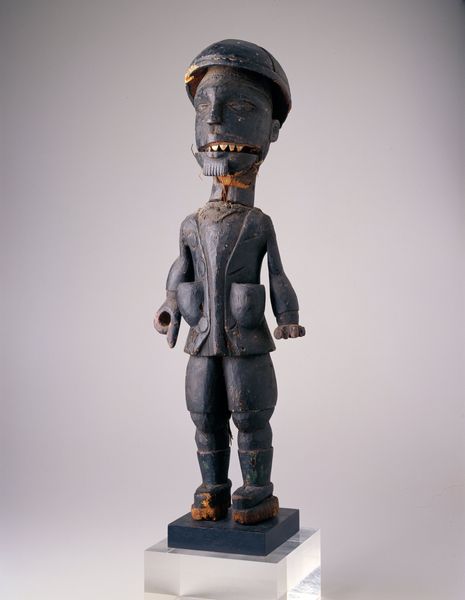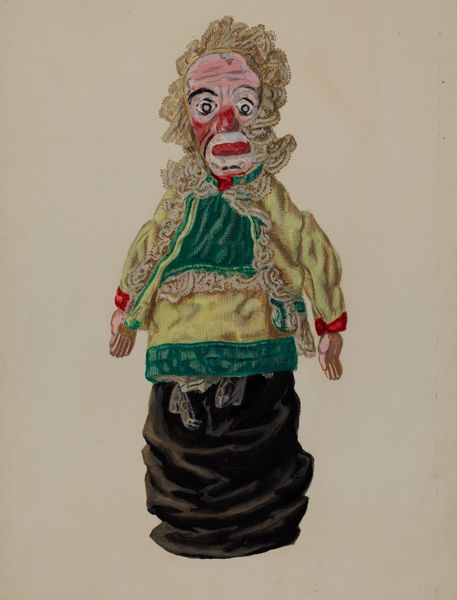
drawing, painting, watercolor
#
portrait
#
drawing
#
painting
#
caricature
#
watercolor
#
folk-art
#
naïve-art
Dimensions: overall: 41.9 x 27.3 cm (16 1/2 x 10 3/4 in.) Original IAD Object: 13" high
Copyright: National Gallery of Art: CC0 1.0
Editor: This watercolor and drawing titled "Hand Puppet - Policeman," dating from around 1936 by Elmer Weise, possesses an undeniable folk art charm. It almost looks cartoonish, with the disproportionate body and stark, simplified facial features. What catches your eye when you look at this piece? Curator: The composition is immediately striking for its deliberate arrangement of forms. Weise uses line and wash to delineate the figure. Notice how the strong verticality of the policeman's tunic dominates the pictorial space, contrasted only by the minimal extension of the puppet's arms, creating a "T" shape and emphasizing a lack of movement. Do you see any particular shapes dominating this "Hand Puppet"? Editor: Well, beyond the tunic’s verticality, I also observe that the cylindrical shape of the head contrasts quite prominently with the puppet's otherwise soft fabric form. I'd agree with you; its immobility is indeed highlighted! Curator: Precisely. Weise expertly renders light, shade, and texture through varied watercolor techniques. Look at the deliberate blurring of edges. How does that affect the mood? The blue washes for his outfit are darker and rough, while a gentle treatment of blush characterizes the face. A semiotic approach reveals this could be the contrast of authoritative role versus individuality or inner softness. The lack of any real background or environmental detail flattens and focuses us to examine the textures that the artist chose. The small imperfections - paint splotches - are quite revealing. Editor: That's a unique perspective, it makes me think about the individual within the constraints of law and order. Looking at this again, I notice that the lack of definition lends the figure an almost ethereal, ambiguous quality. Curator: Exactly. Weise seems to be presenting a carefully constructed character, where each compositional choice and material handling contributes to an intricate tension between control and vulnerability. It is truly rewarding to see these forms brought to life, both literally as an object, and through critical art interpretation.
Comments
No comments
Be the first to comment and join the conversation on the ultimate creative platform.
